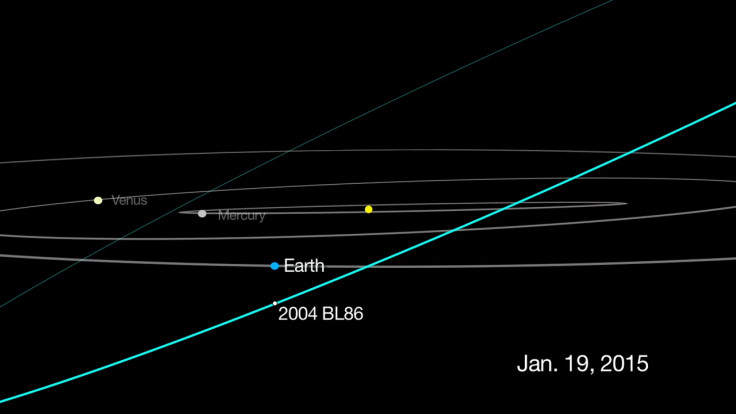Huge mysterious asteroid to fly by Earth in closest encounter for centuries

A huge asteroid will be flying safely by the Earth at its closest approach to the planet for the next 200 years on 26 January, according to Nasa.
Asteroid 2004 BL86 is roughly 1,800 ft (549m) in diameter and will be passing the Earth at a distance of about 745,000 miles (1.2 million km), which is triple the distance between the Earth and the Moon.
Keen astronomers will be able to observe the asteroid with the help of small telescopes and strong binoculars, or you can watch it online live on Italy's Virtual Telescope Project from 20:30 GMT (15:30 ET, 12:00 PT) on 26 January.
"Monday, January 26 will be the closest asteroid 2004 BL86 will get to Earth for at least the next 200 years," said Don Yeomans, who is retiring as manager of NASA's Near Earth Object Program Office at the Jet Propulsion Laboratory in Pasadena, California, after 16 years in the position.
"And while it poses no threat to Earth for the foreseeable future, it's a relatively close approach by a relatively large asteroid, so it provides us a unique opportunity to observe and learn more."
Nasa is planning to observe the asteroid using microwaves to acquire science data and radar-generated images of the asteroid during the days surrounding its closest approach to Earth.
Using huge dish-shaped antennas, Nasa scientists will beam directed microwave signals at the asteroid, and the radar echoes that bounce off the asteroids create images that give information about the physical makeup of the rock.
"When we get our radar data back the day after the flyby, we will have the first detailed images," said radar astronomer Lance Benner of JPL, the principal investigator for the Goldstone radar observations of the asteroid.
"At present, we know almost nothing about the asteroid, so there are bound to be surprises."
© Copyright IBTimes 2025. All rights reserved.






















